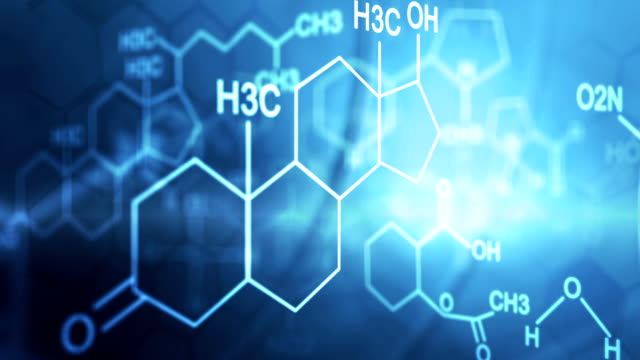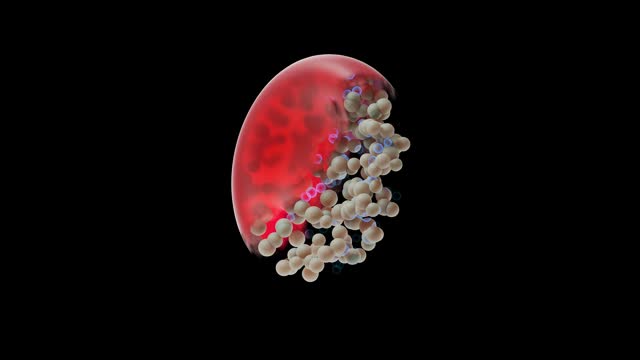
Amygdalas in a human brain, part of the limbic system,
Browse 210+ cell structure diagram stock videos and clips available to use in your projects, or start a new search to explore more stock footage and b-roll video clips.

Amygdalas in a human brain, part of the limbic system,

The optic nerve serves as the primary link between the eyes and the brain, carrying visual information from the retina to the visual processing centers in the brain. The optic nerve serves as the primary pathway for visual information to travel from the eyes to the brain. It connects the retina, which is the light-sensitive layer at the back of each eye, to the visual processing areas in the brain.

Mitochondrion, mitochondria,Medical concept.

Fat cell isolated, Beige adipocyte and lipocyte, cholesterol in a cells, Beige fat cells, lipid droplet, fat in human body, Obesity concept, dermis and hypodermis, nucleus, 3d render

mitochondria,Medical concept,abstract technology mitochondria

mitochondria,Medical concept,abstract technology mitochondria

3d cell structure. Horizontal section, passing from top to middle, then the cage is turned straight

Amygdalas in a human brain, part of the limbic system,

Amygdalas in a human brain, part of the limbic system,

3D motion graphic scientific projection of chemical compound formula on background

Mitochondrion, mitochondria,Medical concept.

Mitochondrion, mitochondria,Medical concept.

Beautiful house with solar panels and batteries. House with pool and electric car

Fertilization: From ovulation to implantation. development of a human embryo: ovulation, fertilization, first division, morula and implantation of blastocyst in the uterine wall.

Modern house with solar panels and storage batteries

Ascaris in cross section magnified under microscope in 40 times filmed on bright field background. Macro view of parasitic worm living in human intestine and causing disease. Research of pests concept

Cross Section Of An Organic Cell With Intracellular Organelles. Medical Science And Research Concept

Cross section of ascaris magnified under microscope in 400 times filmed on bright field background. Macro view of parasitic worm living in human intestine and causing disease. Pests investigation

Ascaris in cross section magnified under microscope in 100 times filmed on bright field background. Macro view of parasitic worm living in human intestine and causing disease. Research of pests theme

Cross section of ascaris magnified under microscope in 200 times filmed on bright field background. Macro view of parasitic worm living in human intestine and causing disease. Research of pests theme

Fertilisation or fertilization (also known as conception, fecundation and syngamy) is the fusion of gametes to initiate the development of a new individual organism. In animals, the process involves the fusion of an ovum with a sperm, which eventually leads to the development of an embryo. Depending on the animal species, the process can occur within the body of the female in internal fertilisation, or outside (external fertilisation). The cycle of fertilisation and development of new individuals is called sexual reproduction.

Red blood cell dissolving with hemoglobin and oxygen molecules on both white and black background — concept

Human fertilization is the union of a human egg and sperm, usually occurring in the ampulla of the uterine tube.

Internal structure of an animal cell, 3d rendering. Section view. Computer digital drawing.

Digital city, diversity of business, technology and internet concept

HUD Futuristic Hi Technology Program Data Binary Code Screen Display Elements Background. Cyberspace Glow Plasma Particle Holographic Form Slow Swirl Seamless Loop In Mystery Galaxy Animation.

Oxygen atom Bohr model rotate on white background. Blue electrons rotate about yellow protons and red neutrons. 3D rendering

The nucleus pulposus and annulus fibrosus work in harmony to support the spine’s ability to move, bend, and twist, while preventing damage to the spinal cord and nerves. Their complementary functions are crucial for maintaining spinal health and preventing conditions like herniated discs.

The optic nerve serves as the primary link between the eyes and the brain, carrying visual information from the retina to the visual processing centers in the brain. The optic nerve serves as the primary pathway for visual information to travel from the eyes to the brain. It connects the retina, which is the light-sensitive layer at the back of each eye, to the visual processing areas in the brain.

Closeup of single red blood cell on white background and on black background. Perfect loop video.

This comprehensive video delves into the external neural pathways and the sensory control system, offering a clear and engaging overview of how the body processes sensory information. Through detailed 3D animations and expert explanations, the video explores the journey of sensory signals as they travel from peripheral receptors through external neural pathways to the brain, where they are interpreted and responded to.

The nucleus pulposus and annulus fibrosus work in harmony to support the spine’s ability to move, bend, and twist, while preventing damage to the spinal cord and nerves. Their complementary functions are crucial for maintaining spinal health and preventing conditions like herniated discs.

The mammalian sperm cell consists of a head, a midpiece and a tail. The head contains the nucleus with densely coiled chromatin fibres, surrounded anteriorly by an acrosome, which contains enzymes used for penetrating the female egg.

The mammalian sperm cell consists of a head, a midpiece and a tail. The head contains the nucleus with densely coiled chromatin fibres, surrounded anteriorly by an acrosome, which contains enzymes used for penetrating the female egg.

Cell division. Mitosis. animation

View of neuron center in process of synapse in neuron cell of neuronal human tissue

Microscopic view of neuron cell in neuronal human tissue with synapses process

Microorganism euglena

The optic nerve transmits visual signals from the eye to the brain, where they are processed and interpreted as images. Light striking the retina triggers electrical signals that travel through the optic nerve, ultimately reaching the visual cortex in the brain.

Understanding the structure of animal cells is fundamental in medical science because it provides insights into how cells function, and many diseases and medical conditions are related to abnormalities at the cellular level. An understanding of cell structure and function is foundational for medical research and the development of treatments and therapies for a wide range of diseases and conditions, including genetic disorders, cancer, metabolic diseases, and neurodegenerative conditions. Researchers and clinicians use this knowledge to diagnose, treat, and prevent diseases that involve cellular dysfunction.

Microorganism euglena

The cell cycle, or cell-division cycle, is the series of events that take place in a cell leading to its division and duplication (replication) that produces two daughter cells.

The cell cycle, or cell-division cycle, is the series of events that take place in a cell leading to its division and duplication (replication) that produces two daughter cells.

Amygdalas in a human brain, part of the limbic system,

Amygdalas in a human brain, part of the limbic system,

The cell cycle, or cell-division cycle, is the series of events that take place in a cell leading to its division and duplication (replication) that produces two daughter cells.

Amygdalas in a human brain, part of the limbic system,

8 organelle, organelle in human cell structure. kinds of human cells 3d rendering

Synaptic transmission is the process by which a neuron communicates with a target cell, or another neuron, through the release of neurotransmitters into the synapse, the space between the axon and dendrites. The strength of synaptic transmission is determined by the number and properties of receptors at the synapse.

View of neurons in process of synapse in neuron cell of neuronal human tissue

A lamella (plural, lamellae), in cell biology, is used to describe numerous plate or disc-like structures at both a tissue and cellular level.

Beautiful house with solar panels and sunbeams